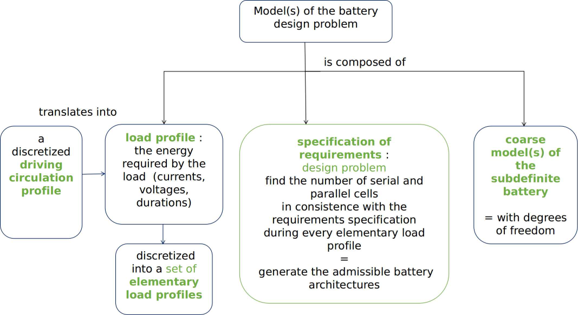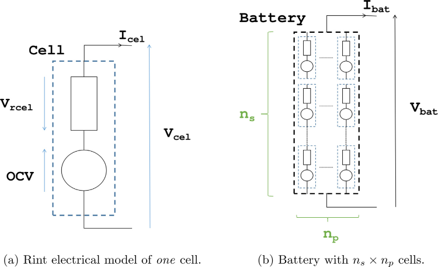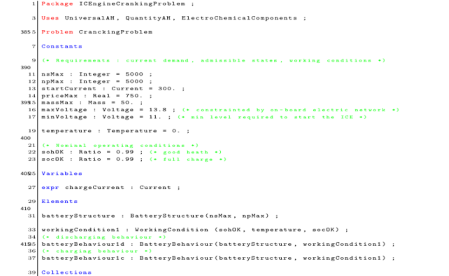This joint academic project between UTC / Roberval and ISAE-Supmeca / Quartz , two french senior engineering schools and their research laboratories, aims to design the architecture and simultaneously the sizing of an on-board energy storage system for a car. The DEPS language has been used for modeling the whole problem. DEPS Studio has been used for generating the whole set of presized admissible architectures.


Determining the architecture and sizing of a battery for a thermal vehicle starting application (ICE starting/cranking) means:
- Choosing the most suitable technology from several possible ones (Pb-A, Li-ion NCA, NMC or LFP, Na-ion, etc.)
- Finding the internal battery architecture (number of cells in series (ns) and number of cells in parallel (np)).
- Satisfying the multi-constraint specifications: current, voltage, volume, weight, price, etc.
- Reaching the several operating points and modes (charge and/or discharge, different State Of Charge (SOC) and State Of Health (SO).
Those works have been published in [1] and [2].




References
[1] S. Diampovesa, A. Hubert, P.A. Yvars, Designing Physical Systems through a Model-Based Synthesis Approach. Example of a Li-ion Battery for Electrical Vehicles, Computers In Industry, Vol 129, 2021.
[2] A. Hubert, C. Forgez, P.A. Yvars, Designing the architecture of electrochemical energy storage systems. A model-based system synthesis approach, Journal of Energy Storage, Vol 54, Elsevier, 2022.